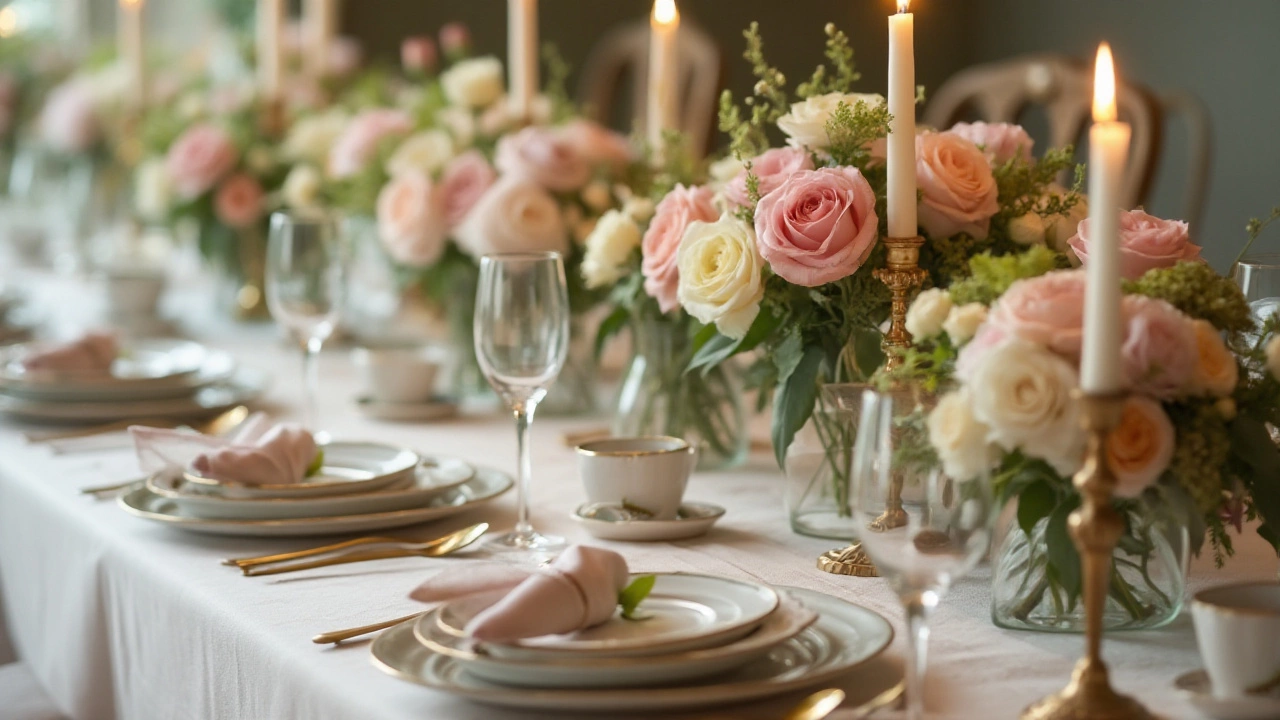Best Wedding Hues: Easy Color Ideas for Your Big Day
Picking the right colors for your wedding can feel overwhelming, but it doesn’t have to be. The hues you choose set the mood, highlight your venue, and make everything—from the veil to the flowers—look cohesive. Below are straightforward tips to help you nail a palette that feels true to you without getting lost in endless Pinterest boards.
Choosing a Palette That Fits Your Style
Start with a single color that you love. It could be the shade of a dress you tried on, a piece of jewellery, or even the paint on a wall at home. Once you have that anchor, add two or three complementary tones. Soft neutrals like ivory, blush, or warm greys work well with bolder shades such as teal, deep burgundy, or dusty lavender. Use a color wheel app or ask a florist to show you swatches—seeing the colors side by side makes it easier to spot clashes.
Think about the season, too. Spring weddings naturally lend themselves to pastel hues, while autumn calls for rich oranges, mustard yellows, and mulberry. Winter weddings can shine with icy blues, silver, or classic black and white. Matching the season helps the colors feel organic and saves you from fighting the natural lighting.
Don’t forget the venue. A historic barn with exposed brick will look striking with rustic terracotta and sage, whereas a sleek city loft pairs better with crisp whites, charcoal, and a pop of jewel tone. Walk through the space at the time of day you’ll be celebrating and note the light—natural light can make a color look completely different.
Mixing Hues with Veils and Flowers
Your veil is more than a backdrop for your face; it can be a subtle color statement. If you love ivory veils, try a veil edged with a thin strip of lace in your accent color. For a modern twist, pastel‑tinted tulle can blend seamlessly with blush or muted sage while still keeping the bridal look classic.
When it comes to flowers, pick one main bloom in your dominant hue and use smaller filler flowers in supporting shades. For example, a navy gown can be brightened with white roses and soft lavender hydrangeas. This layered approach keeps the palette from feeling flat and adds depth to tables, arches, and cake decorations.
Don’t forget the little details—napkins, table runners, candles, and even your wedding stationery. A coordinated color scheme ties everything together without requiring a massive budget. You can reuse the same accent color on the cake ribbon, the bride’s shoes, and the bridesmaids’ bouquets for a polished look.
Finally, test everything together before the big day. Ask your florist for a mini mock‑up, lay out a fabric swatch of your veil next to the chosen flowers, and view the setup in natural light. Small adjustments now save you from a full‑scale redesign later.
Choosing the best wedding hues is all about balance—pick a favorite shade, add a few supportive tones, and let the venue, season, and accessories guide the final mix. With this practical approach, you’ll walk down the aisle feeling confident that every color works together, creating a beautiful, unforgettable backdrop for your celebration.
Choosing Wedding Decoration Colors to Make Your Day Unforgettable
Selecting the perfect color palette for your wedding decorations can make a significant impact on the look and feel of your big day. With an endless array of hues to choose from, it might feel overwhelming. This article guides you through popular wedding color choices, considering seasonal trends and personal styles, and provides practical tips to create a beautiful and cohesive theme.
Read more